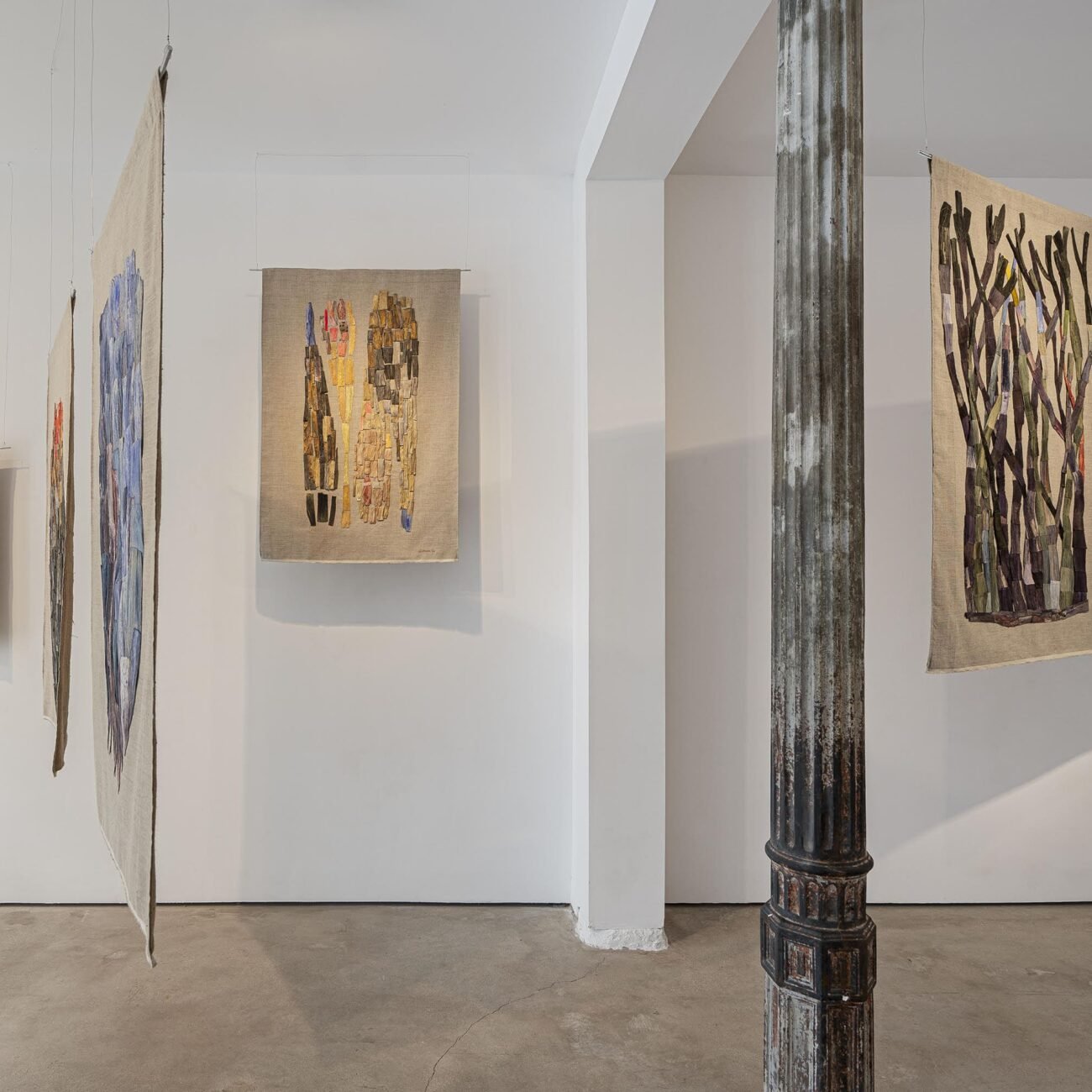Vegetable Metaphor

Location and Working Hours
Bárbara de Braganza 9, Madrid. Open daily 11:00-19:00 Monday and Sunday Closed. Saturday until 2pm.Curators
Soledad UrzúaVegetable Metaphor: Soledad Urzúa
There are many Inca myths about how corn came to be. In one of them, Kuru, an evil sorcerer, fell in love with a very beautiful woman named Mama Sara. To take her as his wife, he brought offerings to her parents, who, despite the distrust they felt, finally accepted. Mama Sara, helpless, took a dagger and escaped with the intention of taking her own life. Bringing the dagger closer to her heart, she prayed to Inti, the god of the Sun, who decided to protect her by turning her into corn. When the townspeople saw the plant, they were amazed by its beauty and the tragic gestures of its leaves that, raised to the sky, looked like arms asking for help. They understood that it was Mama Sara and determined that only women should collect the corn, because if men touched it they would wither future crops.
Along with potatoes and coca, corn was the most revered plant in the Inca Empire. Today, corn is the most widely grown food in the world. While its grains nourish humanity, its leaves are useless waste that is thrown away, buried or burned. In Vegetable Metaphor, the Chilean artist Soledad Urzúa has managed to reverse this contempt, using corn leaves as raw material for her works.
Materiality has been central in Urzúa’s artistic production. She began creating her own papers from pulp and then discovered a set of pressed Himalayan papyri that, unable to be sold, were deteriorating in a warehouse. That was her first experience working with waste, with what the market did not value. When the papyri ran out, she looked for other materials. Inspired by the works of Vivian Suter, the Argentine-Swiss artist who uses non-traditional materials such as fish glue, volcanic stones and plant extracsts in her paintings, Urzúa experimented with various plants, without luck. The leaves decayed or dried and cracked. Until, one day, she came across a new material: corn husks. She researched them and discovered that they were waterproof, which prevented her from gluing them with white glue. So, in her words, corn domesticated her.
Urzúa obtains the leaves from the plantations and, to use them, she must select them, wash them, boil them, dye them or let them dry, then she must iron them, fold them and sew them. The result achieved, those small rectangles of tied and dyed corn leaves, embodied the brushstrokes of her oil paintings and with them she began to assemble her works. Urzúa warned that corn was not only anchored in the history of Latin America but, in addition, its grains that nourish and its leaves that are discarded were a metaphor for the marginalization of women and, especially, their invisible dedication. For this reason, she decided to include the participation of more than seventy women in her work. As if she were looking for the same thing as the Ghanaian sculptor El Anatsui – another of her references – who, to make her formidable fabrics made with bottle caps (another waste), works with numerous assistants, because she hopes that the presence of many hands. Always thinking about how to make the hidden visible, Urzúa considered that part of those hands must have belonged to imprisoned women. Inside the prison, she sat next to them at a table and they folded and sewed corn husks. Urzúa asked them for a type of closure, she suggested colors, but they improvised, leaving their record, seeking to manifest themselves through the page. What is not productive for society – the corn leaves, the imprisoned women – gain notoriety in the works in this exhibition, they are rescued from abandonment by transforming the creative process into a collective experience. Once Urzúa has gathered all her small sewn rectangles, she arranges them by color and with the fabric on the ground he composes a collage, bending down, replicating the movement of those who plant corn, sowing her work, which she only knows when it acquires verticality.
In her previous work she explored the figure of volcanoes, a geological formation that abounds in Chile and which, according to the Mapuche, is where the earth breathes. The volcano is a triangle that points towards the sky. When facing the corn leaf, also triangular, Urzúa reversed its direction, reproducing the geometry of the uterus. The corn leaf that protects the grains becomes a metaphor for the womb that contains life, the central figure of this exhibition. In this sense, it is reminiscent of the ecofeminism of the Chilean artist Cecilia Vicuña, who also works with vegetal and historical abandonments, with a textile language, with menstrual images, with an awareness of her condition as a woman.
The works of Metáfora Vegetal bring to the fore what capitalism despises. Both in its materiality, made with industrial waste such as corn leaves; as in its creation process, dismantling individualism with collective work; and in its theme, making visible those tasks carried out by women and that lack value for a system governed by the market. Urzúa tries to break that silencing through the represented image and collective creation. In the many hands that make up this exhibition, women who have wanted to be mothers and others who did not want to, pregnant women and women who have had abortions, women who are raising their children and others who have lost them, women who have not been mothers participated. and that, if they are, they will have to fight to not end up like a buried corn husk. The works of Metáfora Vegetal suggest a way out of that destiny.
Alan Meller








